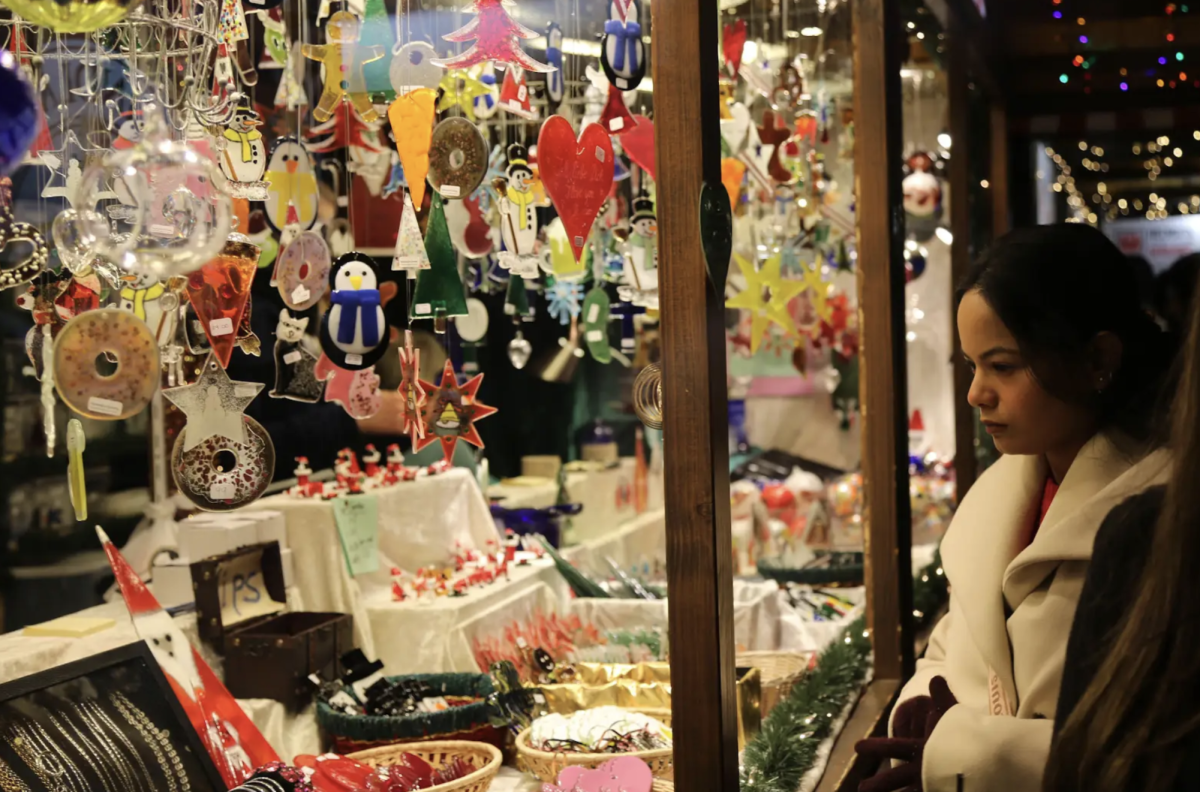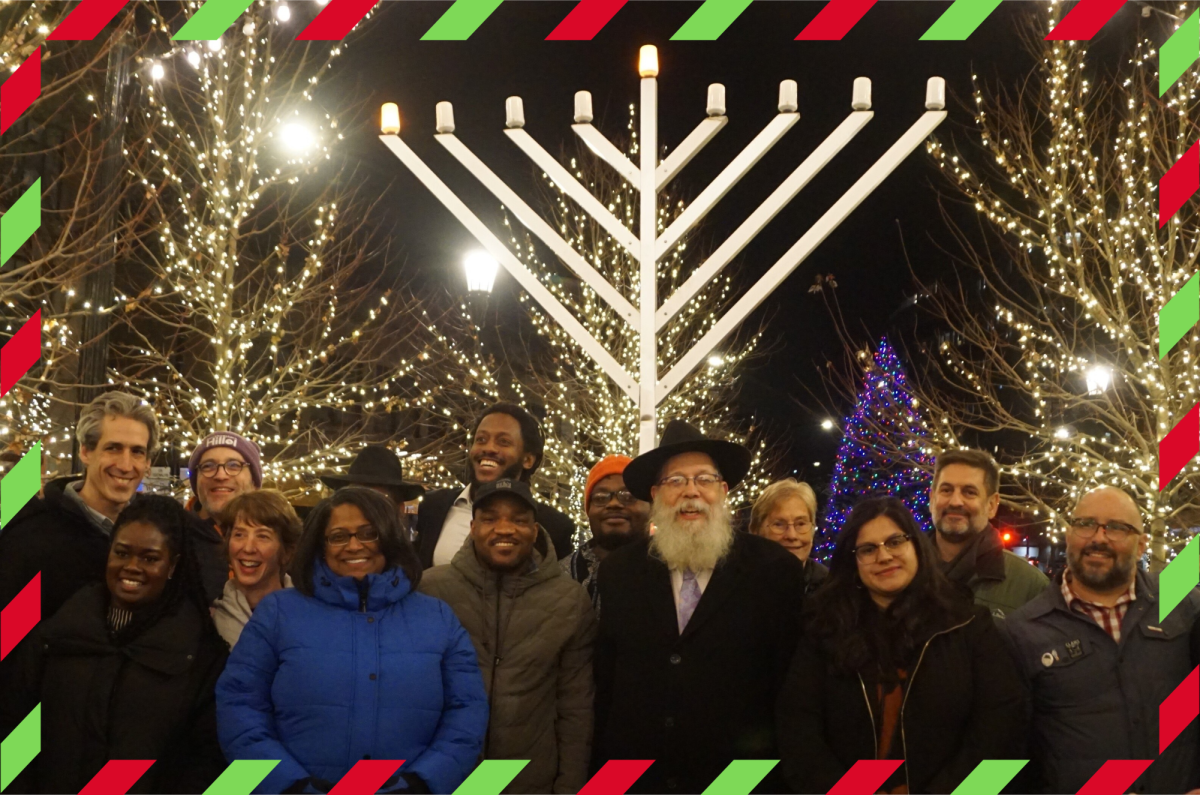When Evanston Township High School junior Mia Darer visited Taiwan for the first time over a year ago, she said it was life-changing. She met family members she didn’t know she had, enjoyed cultural dishes she’d never tried and saw sights she’d never seen.
The most memorable part of her “eye-opening” trip, though, were the stories she heard about her family’s culture and history, which Darer said taught her more than she’d ever known before about her Taiwanese American identity.
The one thing Darer wishes, she said, is that she didn’t have to travel across the world to learn about her heritage.
“It shouldn’t be the case where you’re only discovering your identity by traveling across the world, especially when not everyone can do that,” Darer said. “Before the trip, it was hard for me to own my identity as an Asian American when I wasn’t learning about it in school.”
The Teaching Equitable Asian American Community History Act, or the TEAACH Act, aims to address a lack of educational content around Asian American history, culture and experiences in public schools in Illinois. Since its passage in 2021 and its implementation in the 2022-2023 school year, TEAACH has mandated that schools include at least one unit of Asian American history in Illinois public school curricula.
The act, initially proposed by the the Chicago branch of nonprofit Asian Americans Advancing Justice, is an effort to educate new generations on the struggles and resilience of Asian American communities throughout U.S. history, according to Executive Director Grace Pai.
“Many Asian Americans feel invisible, and they feel like their stories are not understood, talked about or told,” said Pai, who is Korean American. “This is a way of addressing that invisibility and helping kids understand the full brunt and diversity of our communities and our histories.”
Ever since TEAACH went into effect, ETHS history and social sciences teacher Paula Katrina Camaya said she’s been conscious of including diverse Asian American stories in her curriculum.
“I really like this idea of teaching histories, plural, not history, singular,” said Camaya, who is Filipina American. “I’m trying to be more intentional with teaching different parts of Asian American histories, and I’m doing so through an Asian American lens.”
But despite the TEAACH Act’s historical significance as the first legislative measure of its kind in the country, its introduction at ETHS has met a number of challenges.
The main issue, according to English teacher Patricia Delacruz, involves “uneven implementation.”
“I think it’s absolutely essential that we’re honoring history and being accountable, but policy can only do so much,” Delacruz said. “That doesn’t mean that it’s not important or that I’m hopeless about it. It’s just acknowledging the reality that the policy existing does not mean that the education is actually being facilitated.”
This is partly due to the vague nature of the act, she said. Although TEAACH requires a unit of Asian American history, it lacks an explicit definition of what a unit entails.
Students have noticed the act’s slow progress. Systematic changes to public school curricula occur at the state level, through the Illinois State Board of Education’s standards and instruction, and Darer, for example, said she has yet to see a focus on Asian American history reflected in her curricula.
“I feel like it would be really beneficial for there to be a strict curriculum or clear idea for how teachers can provide the guidance to ensure that they’re teaching students enough,” Darer said.
Josina Morita, the Cook County Commissioner for the 13th District, which encompasses Evanston, said she recognizes that the ambiguity in the act’s language makes it difficult for schools like ETHS to enforce it.
Gaps in knowledge among teachers themselves also make TEAACH hard to implement.
“How do we ask teachers to teach something that they never learned?” said Morita, who is Chinese-Japanese American.
According to the 2022-2023 Illinois Report Card, only 7.4% of ETHS teachers identify as Asian, while 66.2% identify as white.
Delacruz, who is Korean-Japanese American, cites this racial makeup as one part of the issue, acknowledging her own inexperience with Asian American education.
“We have a predominantly white teaching staff, and it’s really important to recognize that a lot of (teachers) aren’t cultured with the same… history that we’re trying to teach our students,” Delacruz said.
To bridge these gaps, Advancing Justice | Chicago is leading efforts to make Asian American history more accessible to educators. The organization’s online Asian American Education Resource Database provides a set of curricular resources for K-12 teachers that adhere to Illinois learning standards.
Advancing Justice | Chicago also hosts monthly two-hour professional development workshops for Illinois educators, according to Pai.
“We wanted to develop a professional development model that’s very introductory and not intimidating to give educators a place to start and the right framework of how to think about Asian American history,” Pai said.
Since the workshops launched in 2021, Pai said her organization has trained over 2,000 educators. Though that’s a “small fraction” of Illinois teachers, she said their work is a “really important start.”
The organization also partners with some Illinois school districts to make its professional development workshops mandatory for teachers. According to Pai, ETHS is not currently one of those schools, so teachers like Delacruz must seek out professional development on their own time.
“I have the privilege of working at a district where they do support professional development to a degree if I asked for it, but it’s just hard to find the time and space for it as a busy teacher,” Delacruz said.
Despite challenges with implementation, teachers at ETHS said they still appreciate the significance of TEAACH.
“I know enforcing it is a different story, but just to know that lawmakers and communities prioritize that TEAACH should exist makes me really happy,” Camaya said.
Meanwhile, Asian American students are finding community in spaces and events at ETHS that celebrate their cultures. The Asian Heritage Alliance club, an affinity group for Asian American students, offers students like Darer opportunities to gather after school, which Darer said helps her “feel included and accepted” around those with shared experiences.
Every year, the school also holds a Middle Eastern, North African and Asian Student Summit — a day of in-school workshops and activities dedicated to fostering cultural development.
Senior Nicole Yao, who is Chinese American, said the MENAA summit is just the first step to a fulfilling education on Asian American experiences.
“The summits are really powerful, and that’s where a lot of students find joy in their heritage and culture,” Yao said. “Not that it makes up for the lack of Asian American history and current events in the curriculum, but it does help.”
Email: [email protected]
Related Stories:
— Asian American, Latino and Latina Studies programs continue to push for departmentalization status






